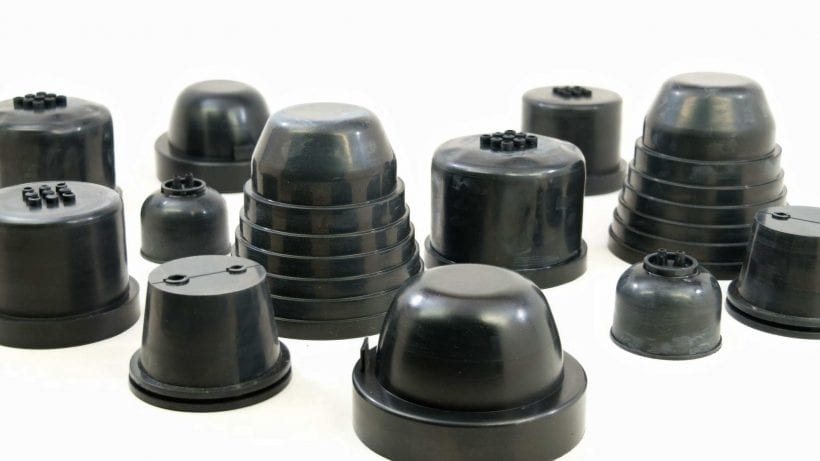Introduction
In the intricate world of machinery, even the smallest components play a crucial role in ensuring smooth and reliable operation. One such unsung hero is the rubber dust cover, a simple yet indispensable protective component that shields your valuable machinery from harmful contaminants. Often hidden from view, these unassuming covers serve as the first line of defense against dust, dirt, moisture, and other external elements that could compromise the performance and longevity of your equipment. In this blog, we will dive into the significance of rubber dust covers, their functions, and the vital role they play in safeguarding your machinery.
1. Understanding the Importance of Protection
Imagine a world where machines and equipment operate without protection, exposed to the elements and the relentless invasion of contaminants. Dust, dirt, moisture, and debris would wreak havoc on the internal components, leading to premature wear, corrosion, and ultimately, the failure of the machinery. The consequences would be costly, both in terms of repairs and downtime. Here, the role of rubber dust covers becomes evident – they serve as a protective barrier, preserving the integrity of your machinery.
2. Introducing Rubber Dust Covers
Rubber dust covers, also known as rubber boots or protective bellows, are flexible and durable components made from high-quality rubber or elastomeric materials. Their primary function is to cover and protect vulnerable parts of machinery from dust, dirt, and other contaminants. These covers are designed to expand and contract, allowing for movement without compromising the protection they provide.
3. The Versatility of Rubber Dust Covers
The beauty of rubber dust covers lies in their versatility. These protective components find applications in various industries and equipment, including:
- Automotive Industry: Rubber dust covers shield vital components such as ball joints, tie rods, and shock absorbers from dirt and debris, ensuring a smooth and safe ride.
- Machinery and Equipment: In industrial machinery, rubber dust covers protect shafts, bearings, and other moving parts from dust and moisture, prolonging their lifespan and reducing maintenance costs.
- Electronic Equipment: In sensitive electronic equipment, dust covers safeguard delicate components from contamination, maintaining their performance and reliability.
- Medical Devices: Rubber dust covers are used in medical equipment, creating a barrier to protect crucial components from contamination during use and storage.
4. How Rubber Dust Covers Work
The design of rubber dust covers is deceptively simple, yet highly effective. When machinery is in motion, these covers expand and contract accordingly, adjusting to the equipment’s movement without compromising the protection they provide. This flexibility ensures that the vulnerable components remain shielded from external elements, even in dynamic and demanding operating conditions.
5. Common Applications of Rubber Dust Covers
Let’s take a closer look at some common applications of rubber dust covers:
- Ball Joint Dust Covers: In vehicles, rubber dust covers protect the ball joints from dirt and debris, preventing premature wear and ensuring proper steering and suspension performance.
- Shaft Dust Covers: In industrial machinery, rubber dust covers cover exposed shafts and bearings, preventing contamination and extending the life of these critical components.
- Shock Absorber Dust Covers: In automobiles, dust covers protect shock absorbers from dirt and water, enhancing their performance and maintaining ride comfort.
6. The Importance of High-Quality Rubber Dust Covers
The effectiveness of rubber dust covers lies in their ability to provide reliable protection. Investing in high-quality covers ensures durability, resilience, and longevity, safeguarding your machinery and reducing the risk of costly repairs and downtime.
7. Signs of Failing Rubber Dust Covers
Like any component, rubber dust covers can wear out over time due to exposure to harsh conditions and heavy use. Some common signs of failing dust covers include:
- Visible Damage: If you notice tears, cracks, or visible wear on the cover’s surface, it may no longer provide adequate protection.
- Contamination: The presence of dust, dirt, or moisture on the protected component indicates a compromised dust cover.
- Reduced Flexibility: Dust covers that have lost their flexibility and fail to expand and contract may be due for replacement.
8. Replacing Rubber Dust Covers
If you observe any signs of failing rubber dust covers, it is essential to have them replaced promptly. Timely replacement will prevent further damage to the machinery and extend the life of vulnerable components.
9. Proper Maintenance and Care
To maximize the lifespan and effectiveness of rubber dust covers, regular maintenance is essential. Periodic inspections, cleaning, and lubrication will ensure that the covers remain in top-notch condition, providing reliable protection to your valuable machinery.
Conclusion
Rubber dust covers may appear inconspicuous, but their significance in safeguarding your valuable machinery is undeniable. By shielding vulnerable components from dust, dirt, and moisture, these unassuming covers ensure the smooth and reliable operation of your equipment, reducing the risk of costly repairs and downtime. Investing in high-quality rubber dust covers and maintaining them properly will pay off in the long run, keeping your machinery protected and performing at its best. So, the next time you witness machinery in action, remember to appreciate the quiet guardians – rubber dust covers – silently working to preserve the integrity of these valuable assets.


